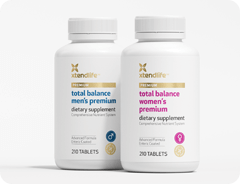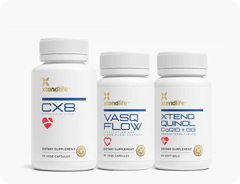Sure, we all vaguely glance at the number of calories mentioned on the label, but not every calorie is of the same quality and not every calorie benefits the body the same way. (We will be covering this in more detail at a later stage). The key to label reading is to read it as a whole.
Watch your servings
It is best to use the per serve column to work out the amounts in a serving of food. Be careful not to be tricked though, I once bought a packet of crackers and forgetting to check the serving sizes, I munched away happily, unaware that there were actually 3 servings in the packet! Oops - I needed to multiply everything on the table by 3!
Know what you are eating
Check out the ingredients list under the nutrition information table. The ingredients are usually listed in order of quantity from largest to smallest. So if you see a list that starts with water, sugar, etc., you know that you are pretty much drinking sugar water, no matter how much the product looks like orange juice!
Make full use of the 100g or percentage column if there is one
The 100g column is the most useful when comparing products between different brands.
Fat: Try to choose foods with less than 10g total fat per 100g and less than 2g saturated fat per 100g.
Sugar: Try to choose foods with less than 10g sugar per 100g. This will help you wipe out most processed foods. 4g of sugar = 1tsp so work out how much you are eating in a serving!
BUT REMEMBER… If it is a dairy product, such as yoghurt the first 4-5 g of sugar/100g is lactose. Lactose is fine to consume, but anything on top of the 5 g is added sugar. For example, if a yoghurt has 7.3g of sugar per 100g, roughly 5g of it is lactose, and 2.3g of that is added sugar.
Check out the percentages
% of Daily Value Intake tells us the percentage of the official daily recommended amount in each serving. As a guide, if you want to consume less of a nutrient (sugar, for example), choose foods with a % DV of 5 percent or less. On the other hand, if you want to consume more of a nutrient (such as fiber), seek foods with higher % DV. Remember that these percentages are usually based on a 2,000 calorie a day diet. You may need to consume less, or more depending on your age, gender, activity levels, and whether you are trying to lose, gain or maintain weight.
Here is a quick go-to guide that you could print out and keep handy for when you next hit the supermarket aisles.
Join "My Daily Sugar Allowance" Here.
References:
- https://www.diabetes.org.nz/food_and_nutrition/how_to_read_food_labels
- http://www.heart.org/HEARTORG/GettingHealthy/NutritionCenter/HeartSmartShopping/Understanding-Food-Nutrition-Labels_UCM_300132_Article.jsp#
- http://www.fda.gov/Food/IngredientsPackagingLabeling/LabelingNutrition/ucm274593.htm
- http://www.heartfoundation.org.au/healthy-eating/food-labels/Pages/salt.aspx


 Supplements
Supplements Bundles
Bundles









